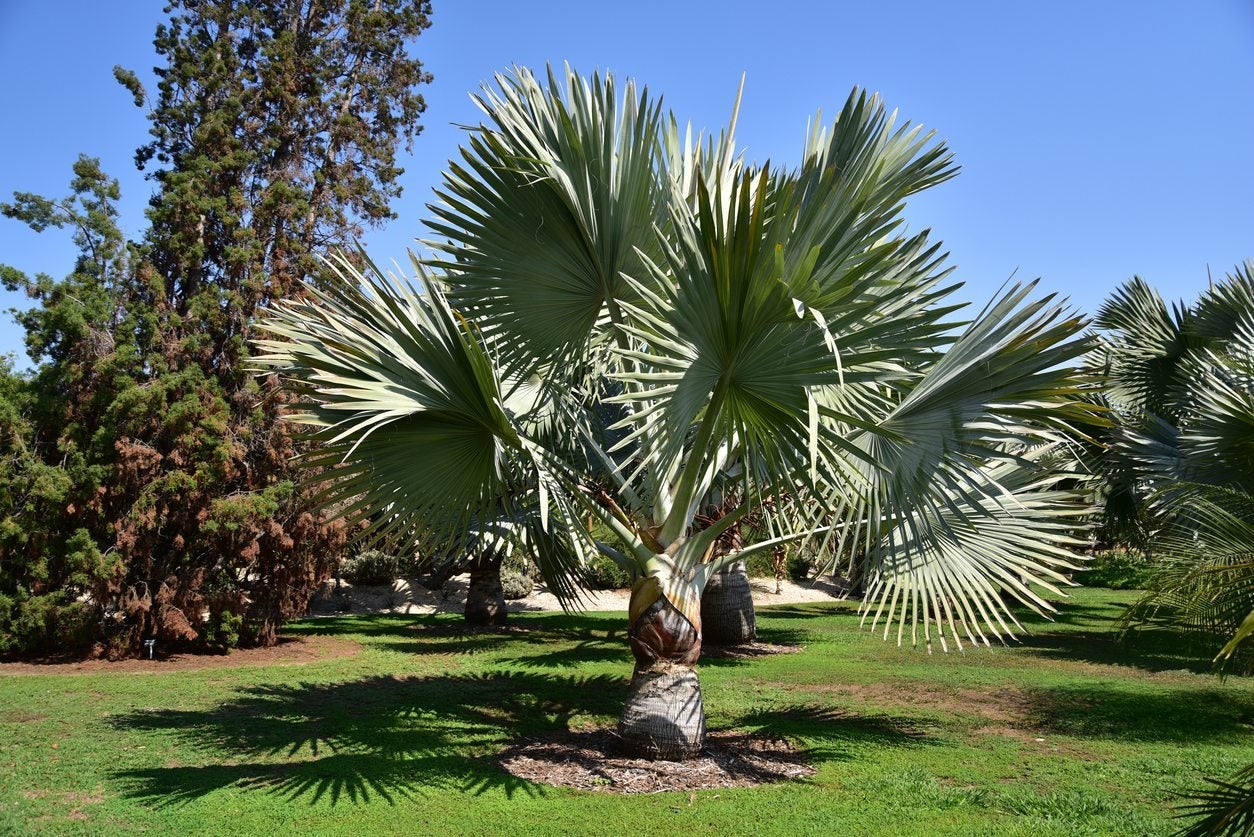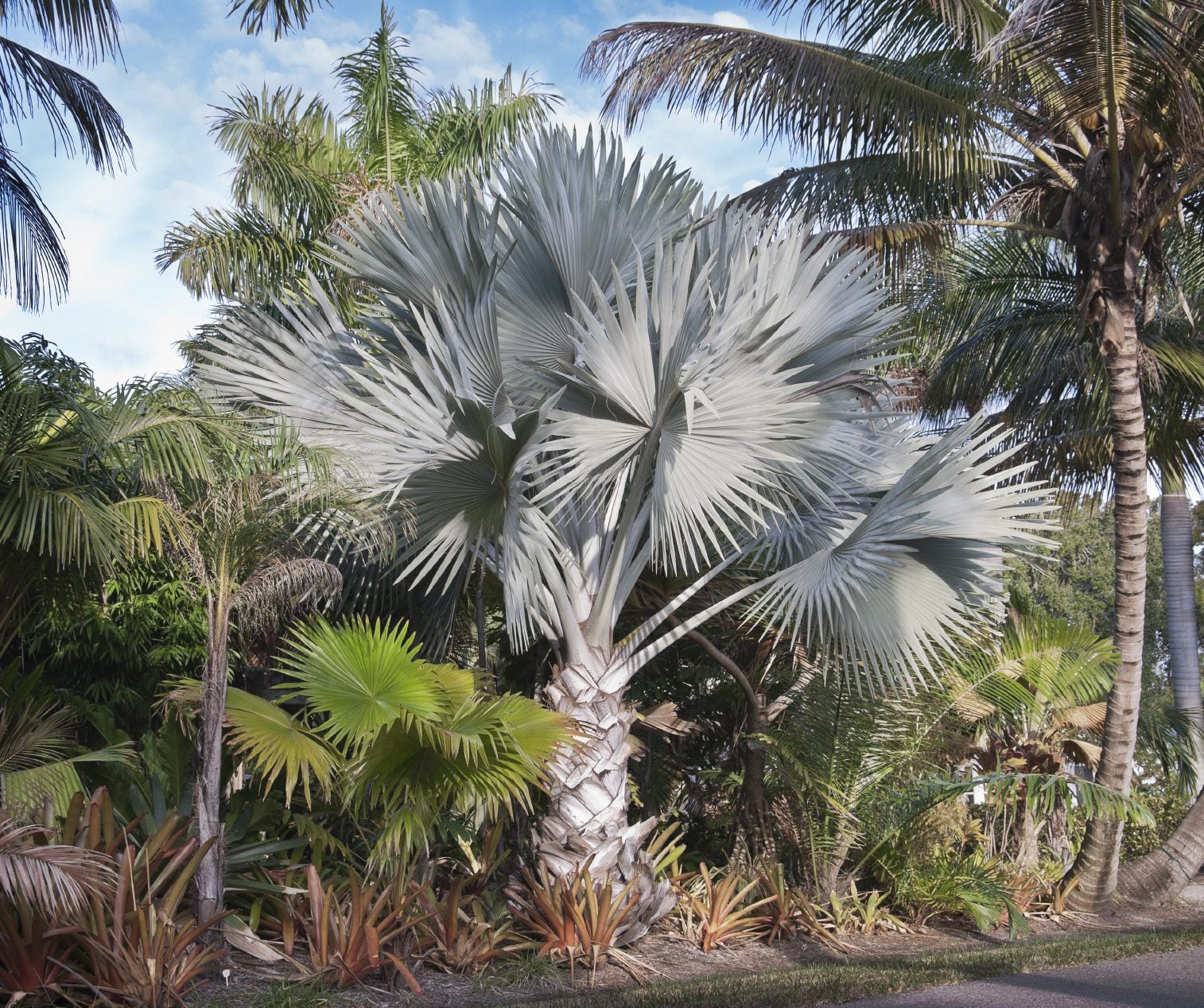Bismarck Palm Watering: How To Water A Newly Planted Bismarck Palm


Bismarck palm is a slow-growing, but ultimately massive palm tree, not for small yards. This is a landscaping tree for monumental scale, but in the right setting it can be a beautiful and regal tree to anchor a space and accent a building. Watering a new Bismarck palm is crucial for ensuring it grows and thrives.
About the Bismarck Palm
The Bismarck palm, Bismarckia nobilis, is a large sub-tropical palm tree. It is a solitary palm that is native to the island of Madagascar, but which does well in zones 9 through 11 in the U.S., thriving in areas like Florida and southern Texas. It grows slowly but can go up to 50 feet (15 m.) high with a crown that can reach up to 20 feet (6 m.) across.
How to Water Newly Planted Bismarck Palms
A Bismarck palm is a big investment, both in time and money. The tree only grows one to 2 feet (61 cm.) per year, but overtime it grows quite large. To ensure that it will be there for years to come, you need to know when to water Bismarck palms, and how. Not watering a new Bismarck palm could have disastrous consequences. Bismarck palm watering can be tricky. To get it right, you need to water your new palm so that its roots stay moist for the first four to six months, without letting it get waterlogged. Good drainage is crucial, so before you plant the tree, make sure the soil will drain well. A good basic guideline is to water the palm every day for the first month and then two to three times per week for the next several months. Continue watering once a week for about the first two years, until your palm is well established. A good rule of thumb for the amount of water you should use at each watering is to go by the container the Bismarck palm came in. For example, if it arrived in a 25-gallon (95 L.) container, give your new tree 25 gallons (95 L.) of water each time, a little more in hotter weather or less in cooler weather. New Bismarck palm watering is a real commitment, but this is a grand tree that needs care to thrive, so don’t neglect it.
Gardening tips, videos, info and more delivered right to your inbox!
Sign up for the Gardening Know How newsletter today and receive a free copy of our e-book "How to Grow Delicious Tomatoes".

Mary Ellen Ellis has been gardening for over 20 years. With degrees in Chemistry and Biology, Mary Ellen's specialties are flowers, native plants, and herbs.
-
 Grow ‘Karl Rosenfield’ Peony Plants For The Ultimate Frilly Border Beauties And Cut Flowers
Grow ‘Karl Rosenfield’ Peony Plants For The Ultimate Frilly Border Beauties And Cut FlowersFor frilly double magenta peony petals infused with a heady fragrance, grow ‘Karl Rosenfield’ peony plants. Here’s how to cultivate the ultimate plushy blooms
By Tonya Barnett
-
 10 Common Composting Problems That Can Spoil Your Garden Gold – Plus Easy Fixes
10 Common Composting Problems That Can Spoil Your Garden Gold – Plus Easy FixesLearn how to troubleshoot common composting issues before they ruin your stash – from bad smells and bugs to materials not breaking down as they should.
By Susan Albert
